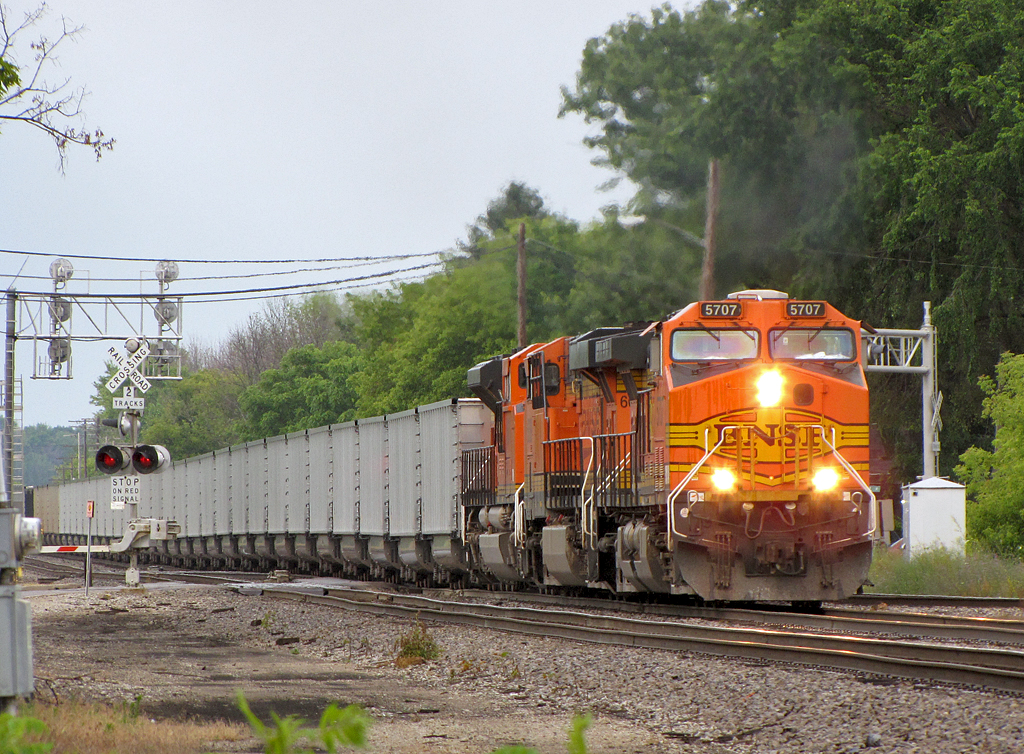
The BNSF railroad will spend nearly $500 million next year expanding its operations in the Northern region, the company announced.
The railroad — which is the second largest freight railway system in the US after the Union Pacific — currently is experiencing its fastest growth in the North, where it services the agriculture, coal, crude oil and materials related crude oil exploration and production industries.
Details about where and how that money will be invested are expected to be announced early next year, according to a BNSF news release.
$6 Billion Capital Investment
The announcement came as part of the unveiling of the BNSF’s $6 billion capital expenditure plan for next year. Most of that investment — about $2.9 billion — will be used to shore up the railroad’s existing infrastructure, including the replacement and upgrading of railroad ties, rails, and ballast throughout its three transcontinental routes.
Besides the $500 million the company will spend in the North, another $1 billion will be spent on other expansion projects.
Next years capital expenditures will be about $500 million higher than what the company spent on improvements and infrastructure this year. From 2000 through the end of 2015, BNSF will have spent more than $50 billion on equipment, infrastructure and maintenance.
Growing Demand for Rail Freight
BNSF President and CEO Carl Ice said the company’s goal was to maintain train traffic fluidity and to expand capacity to meet the growing demand for rail freight.
“BNSF’s capital investment program since the beginning of 2013 through the end of 2015 is unprecedented and is clear evidence of our confidence in a growing economy and our intention to meet the demand for service that comes from all our customers,” Ice said. “We have made great progress in expanding the segments of our railroad that have most constrained by rapidly increasing demand. Once these new capital programs are completed, we expect to further restore the capacity flexibility we have historically enjoyed to manage the periodic demand surges that come from a dynamic and fast-paced environment.”
Energy Efficient Locomotives
The railway also pans on buying 320 new energy- and fuel-efficient locomotives to add to its fleet of 7,500. These may include the GE’s new energy-efficient Evolution Series locomotives that can move one tone of freight more than 480 miles on a single gallon of diesel fuel.
The GE Evolution locomotives, known in the industry as GEVOs, feature a redesigned engine that are in compliance with new Tier 4 standards requiring particulate emissions to be reduced by 70% and carbon dioxide by 76%, the largest reductions in history.
Idle-Reduction Equipment
In related news, BNSF announced that it plans to retrofit 11 of its locomotives in Washington State with new idle-reducing technologies that reduce emissions and conserve fuel. The HOTSTART auxuiliary power units (APUs) reduce idling during cold weather by keeping the locomotives engine warm and ready to restart, eliminating the need for a total shut down and reducing fuel consumption, emissions, noise and engine wear.
The 11 locomotives also will be fitted with automatic engine start/stop systems (AESSs) that shut down the locomotive when not needed. Combined with the APUs, the AESSs can potentially eliminate nearly all locomotive engine idling.
BNSF already has equipped more than 90% of its more than 7,500 locomotives with AESS devices.
